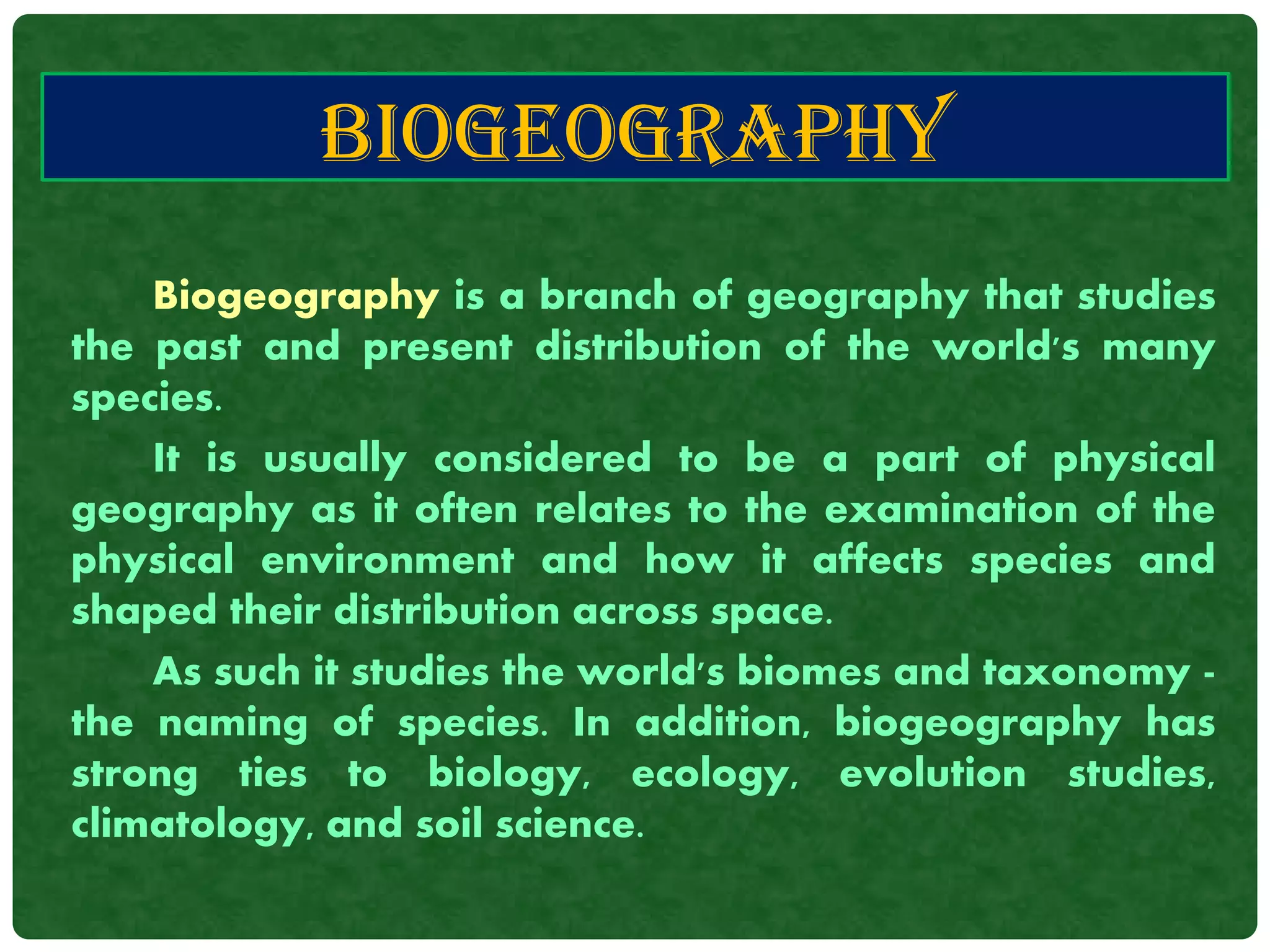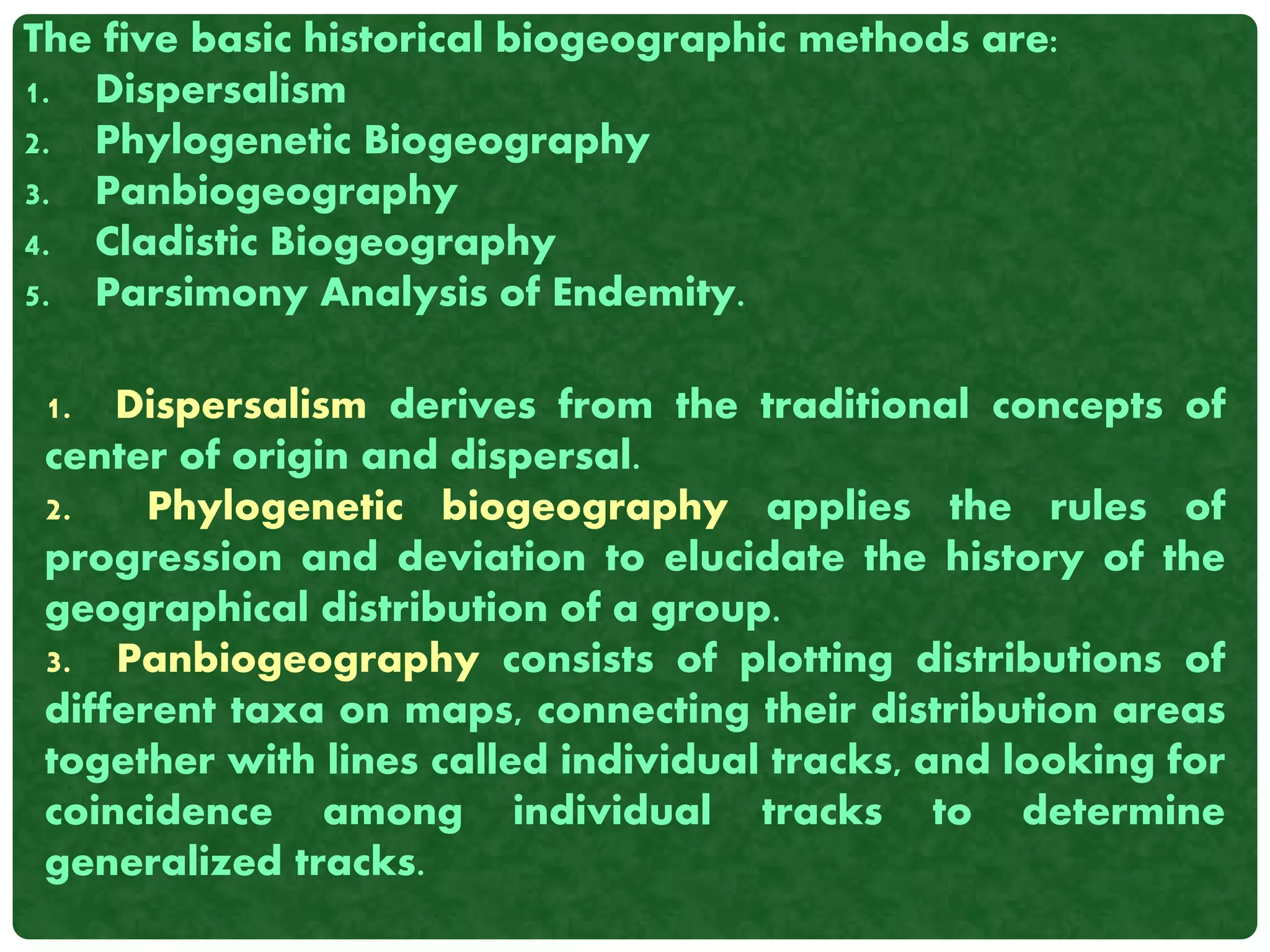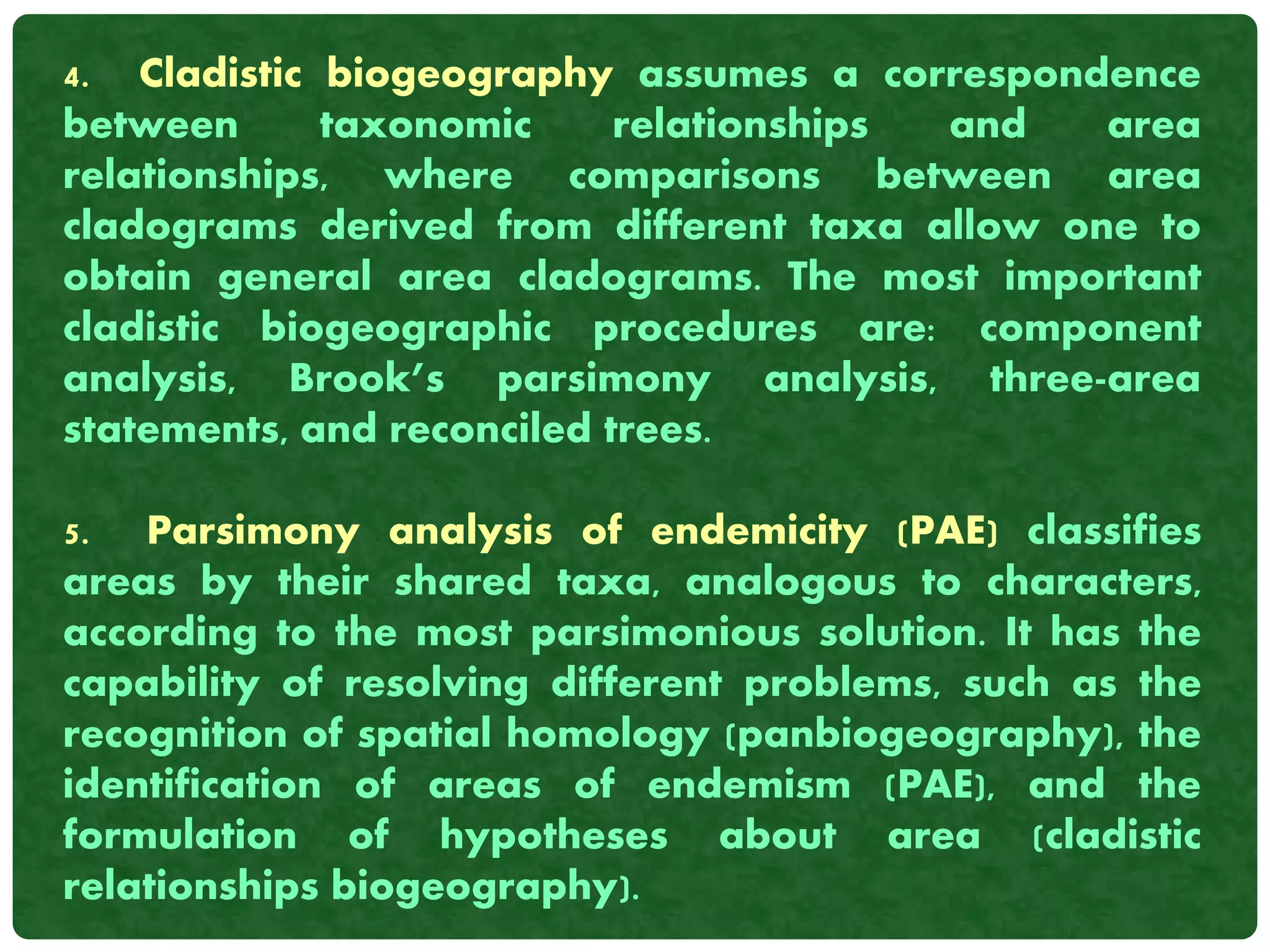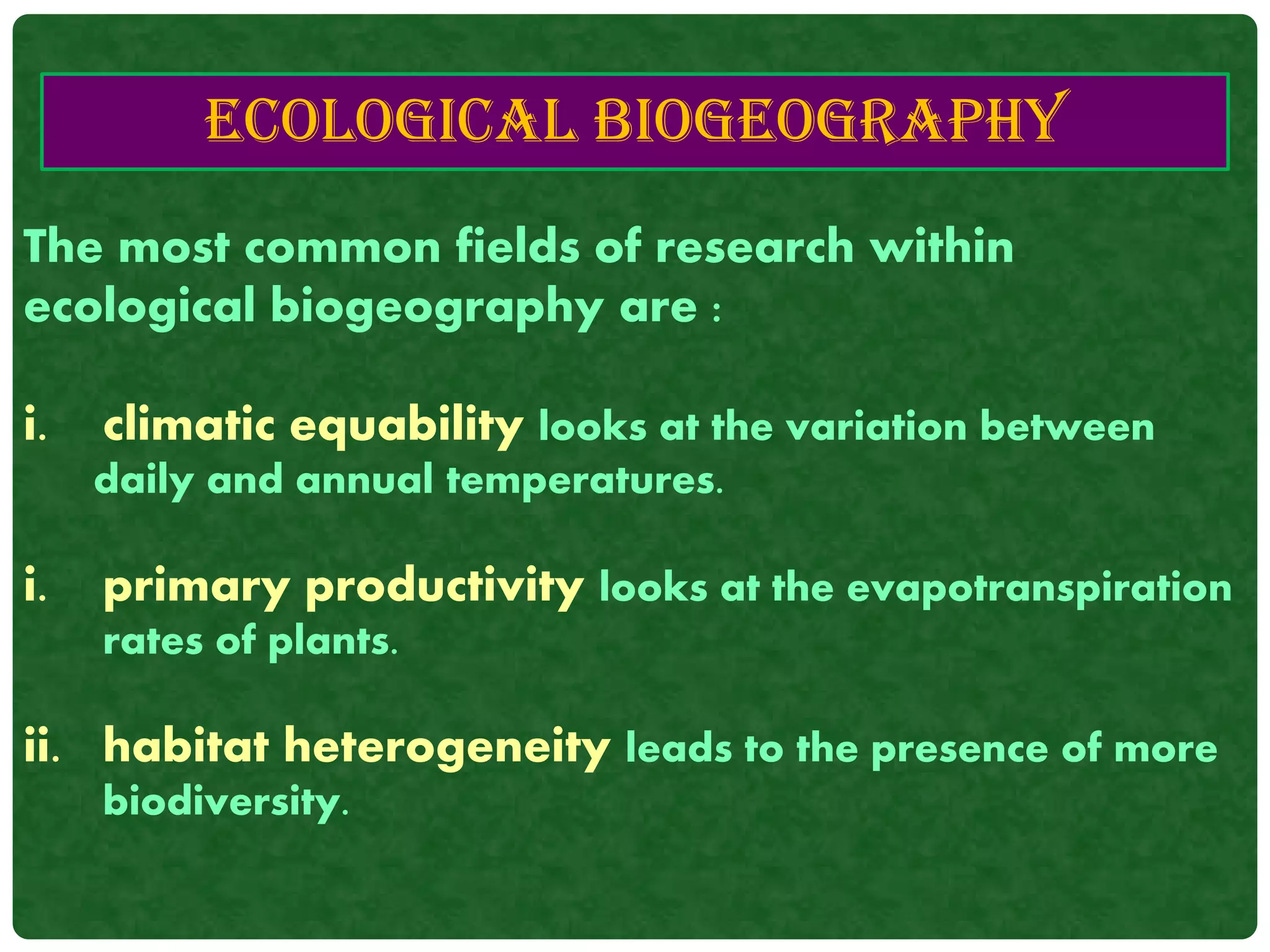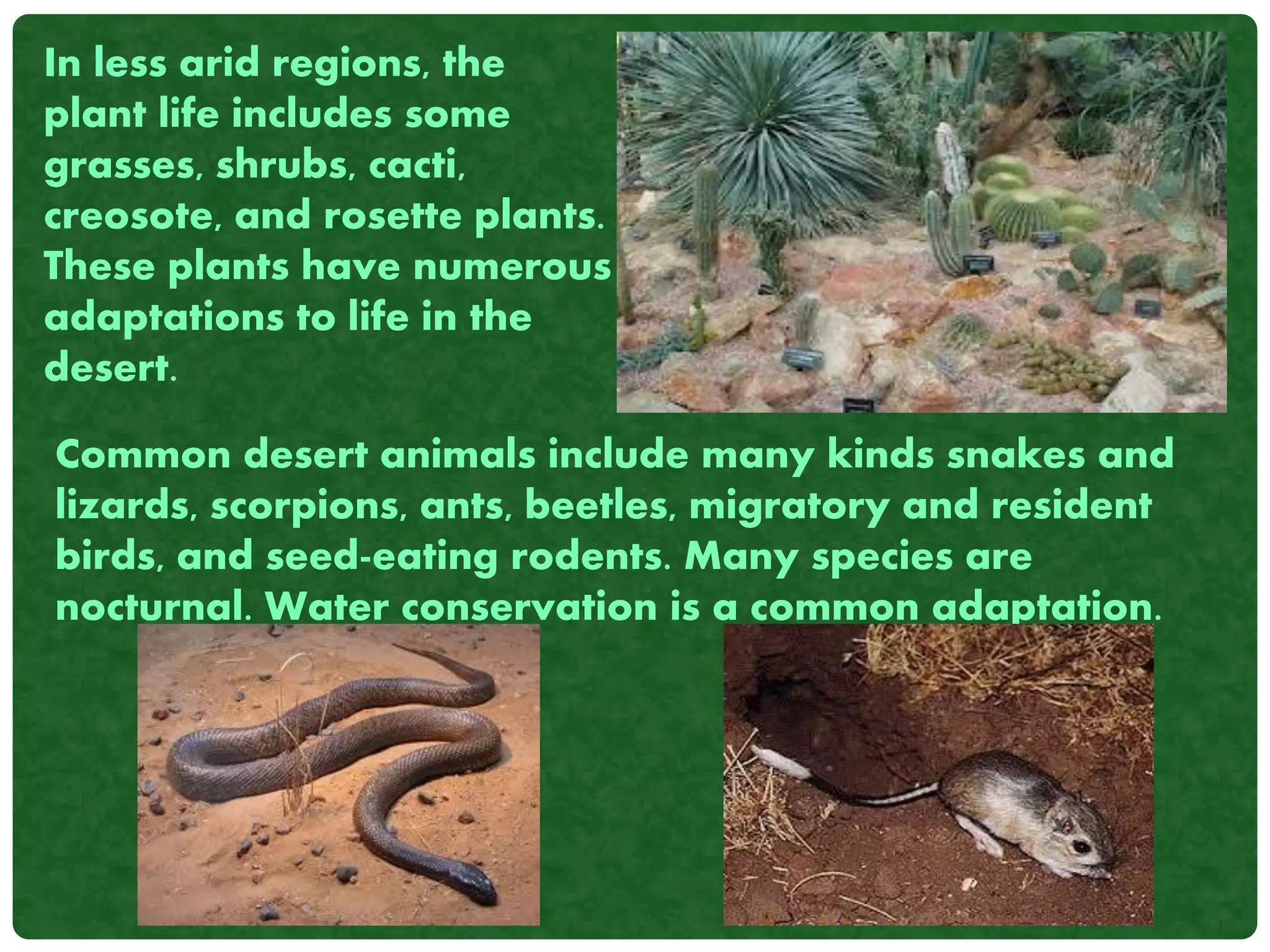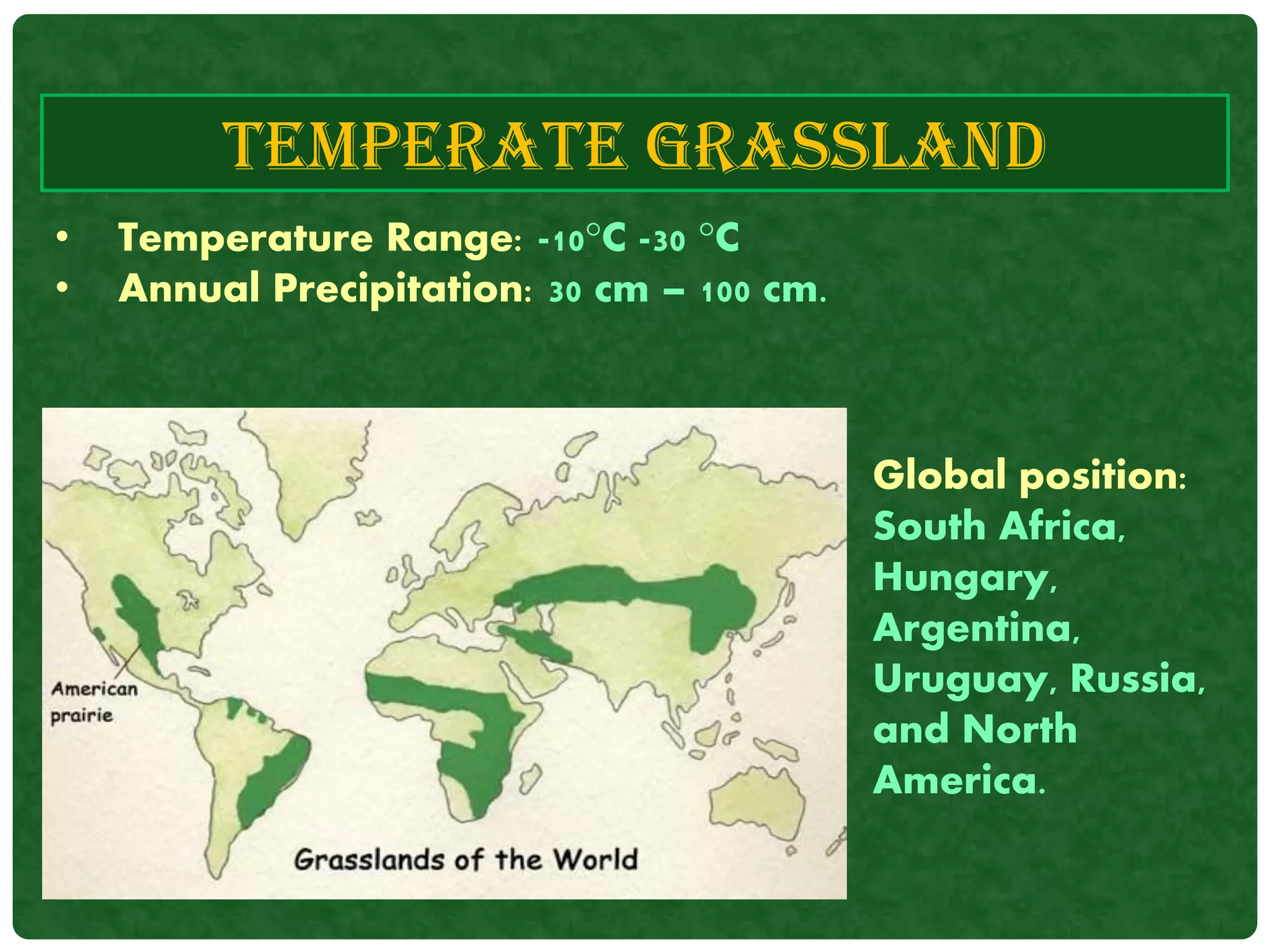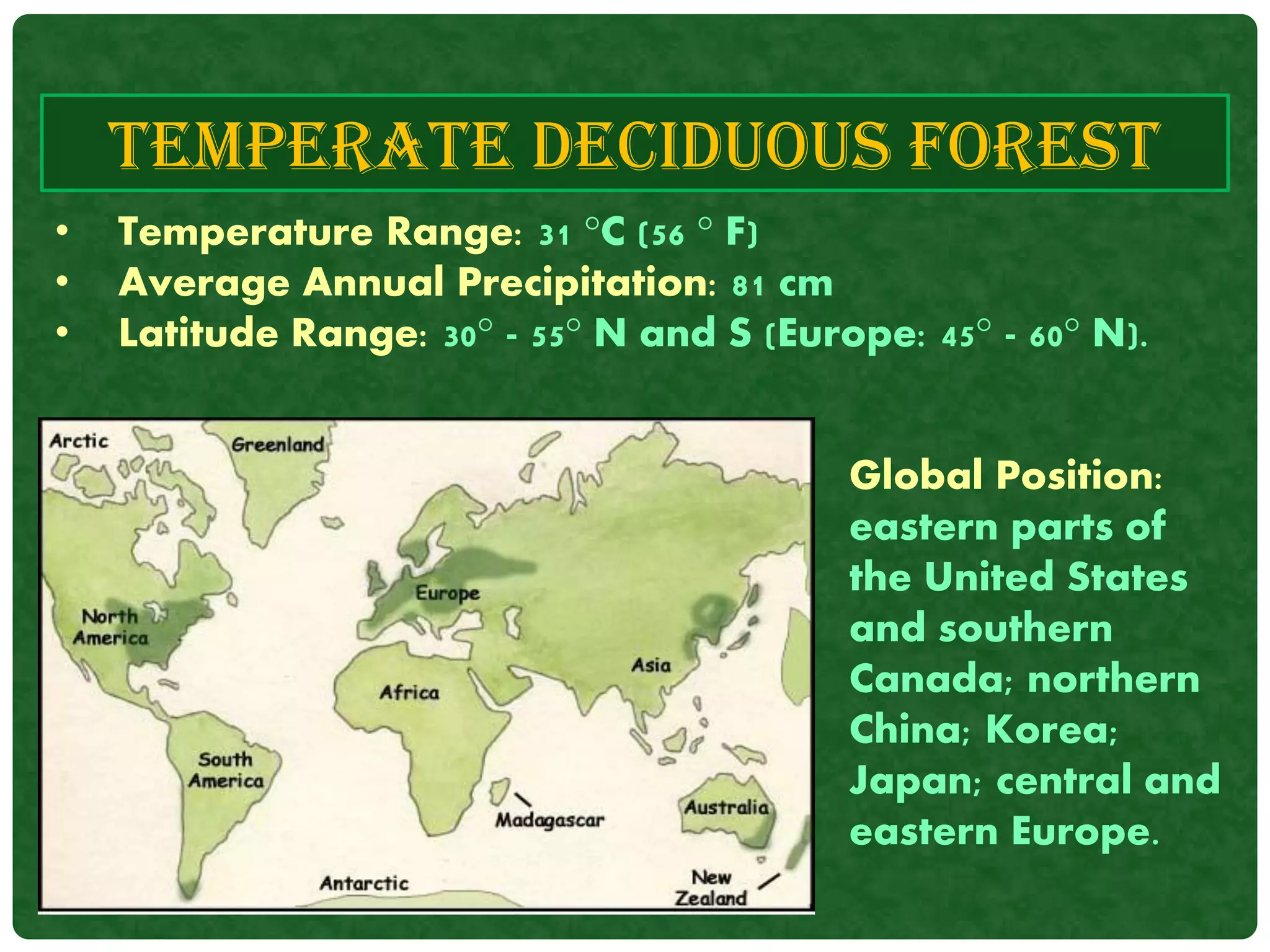This document provides an overview of biogeography, which is the study of the distribution of species across different regions. It discusses the history of biogeography, with Alfred Russel Wallace seen as the "Father of Biogeography" for his early research. There are three main types of biogeography: historical biogeography focuses on origins and extinctions of taxa; ecological biogeography examines current distributions based on environmental interactions; and conservation biogeography works to protect environments. The document also describes different terrestrial and aquatic biomes across the world, highlighting their defining characteristics, climates, plants, and animals.

